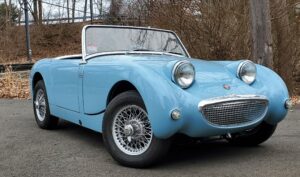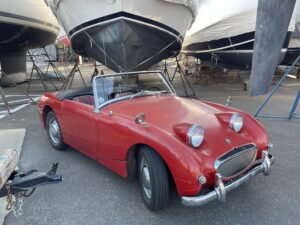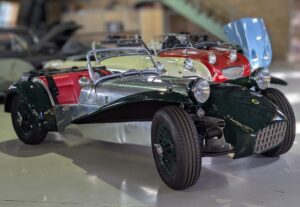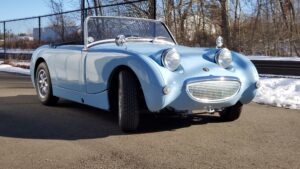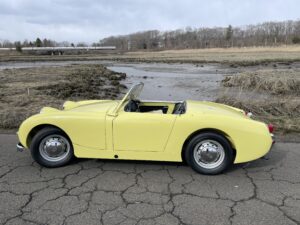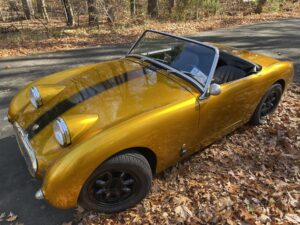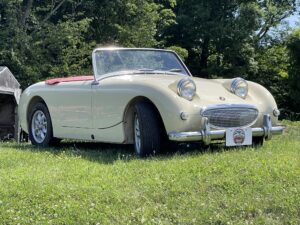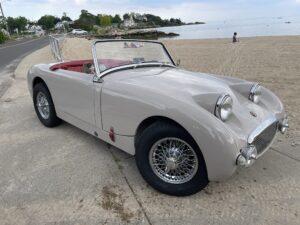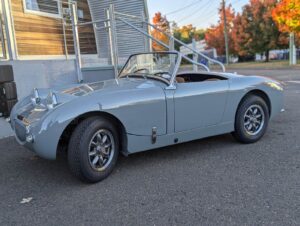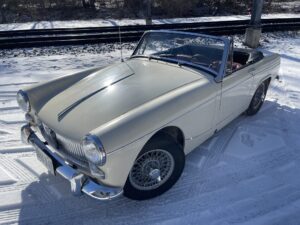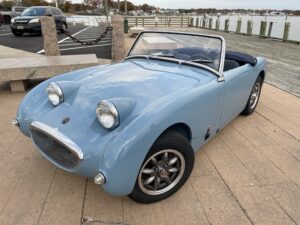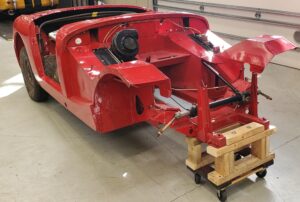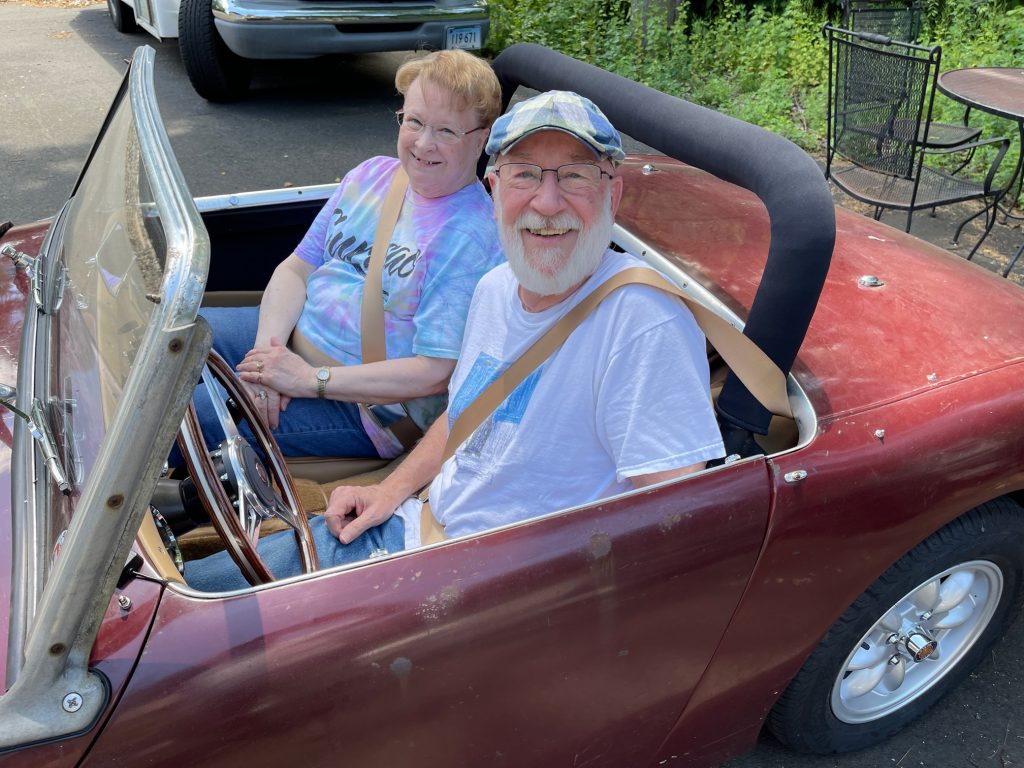
Why are these people so happy? Because after it sat for decades in their garage, they sent us this:
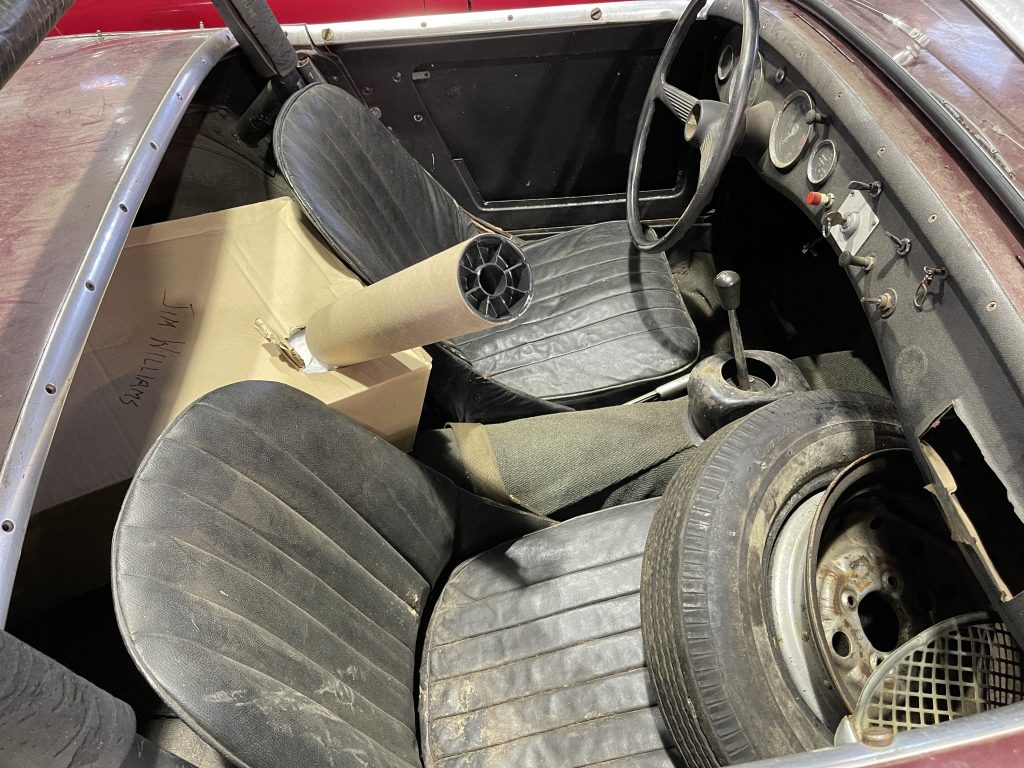
And got back this!

Congratulations to Jim and Nancy! Take a video tour of the massive restoration their Bugeye enjoyed in the video below where you can see the result of a 250 item build sheet :
I’m a big fan of mechanical restoration without a repaint, (such as you can see here), because Bugeyes lend themselves to patina and new paint jobs can create more stress then anything else. Many of us drive simple open sportscars (and motorcycles) for a sense of freedom. It is quite liberating to drive a restored car without fear of fingerprints or door dings (and driving in this car I received no less affection and acknowledgement than if the car was freshly painted)!
All a Bugeye ever wanted to be was a simple sportscar. Then the world changed, and people started valuing matching numbers, (on a car that had non-matching numbers when it left the factory), and great paint work, (on a car that was $1,795 when new and only came in about 6 colors), and low mileage, (on a car that had a broken speedo cable and broken odometer long before it was old enough to be something collectible). All of these market forces have been eroding the raw essence of this particular simple car.
I would be the first to admit that we have benefited from these global changes. We have been able to serve the market as it has evolved, and we’ve built electric, supercharged, hopped-up and gussied-up Bugeyes from mild to wild. We have loved every one of them. And I love new paint jobs too! (And we have many more outlandish builds to come.)
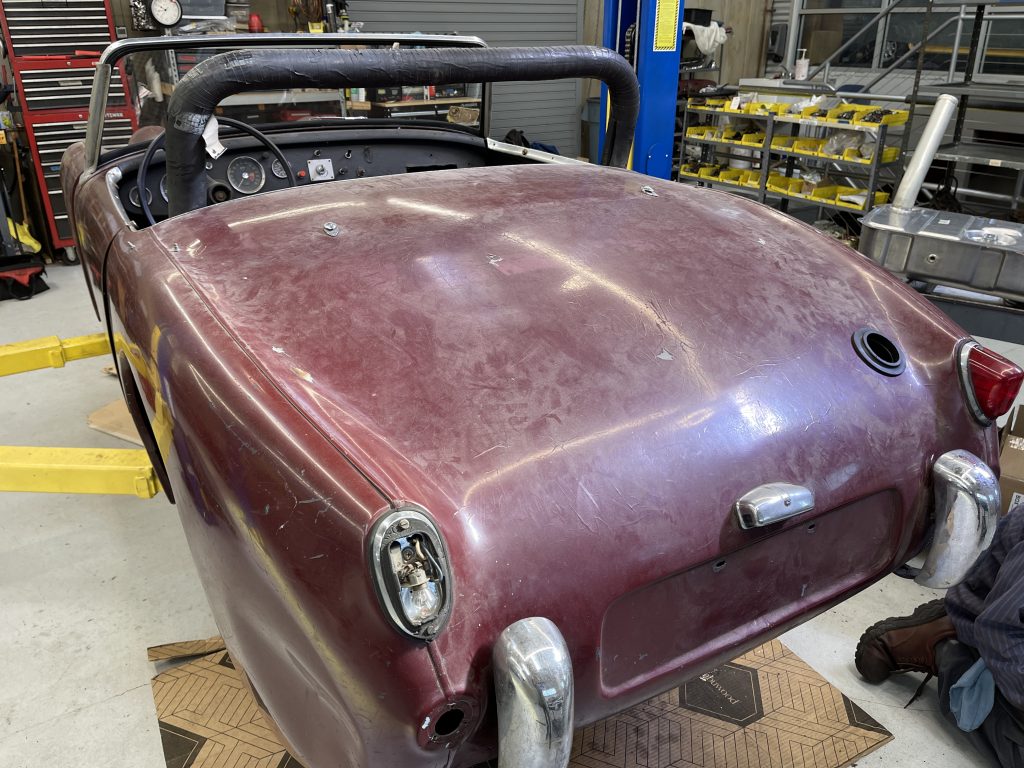
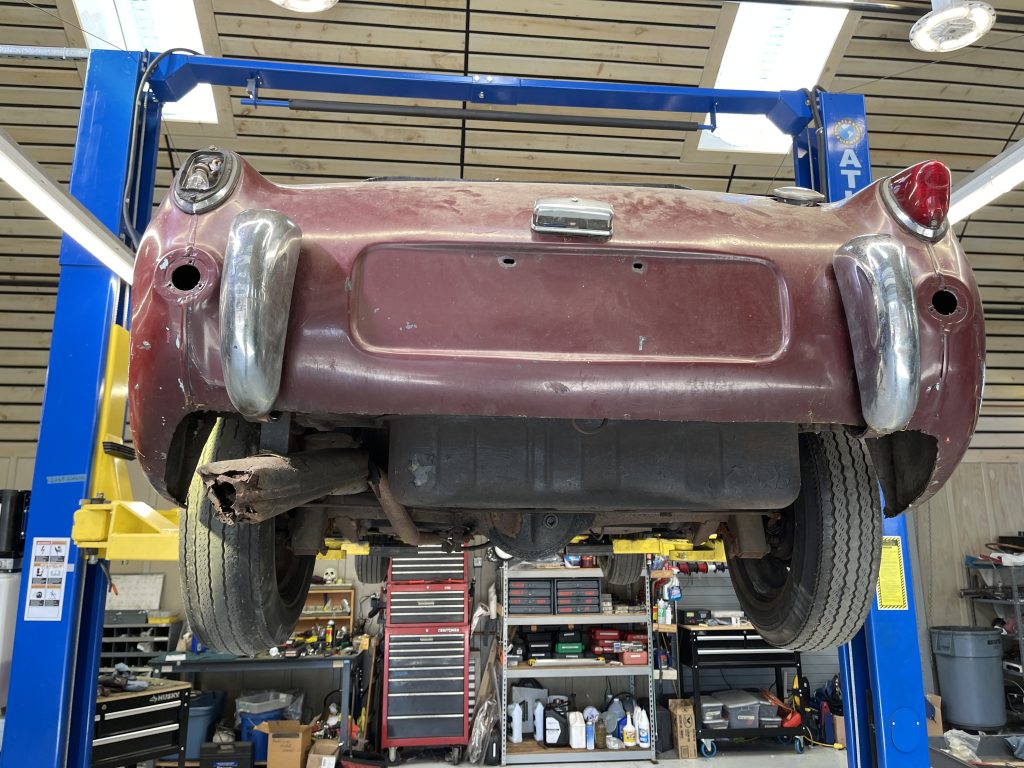
But let’s go back to 1978. My Bugeye, “Gumby,” sat forlorn on Orange Street in New Haven, Connecticut, in gray primer, parallel parked with dents from cars parking in front and behind, (and that wasn’t a concern back then) because this was a car. A cheap car. A basic car.
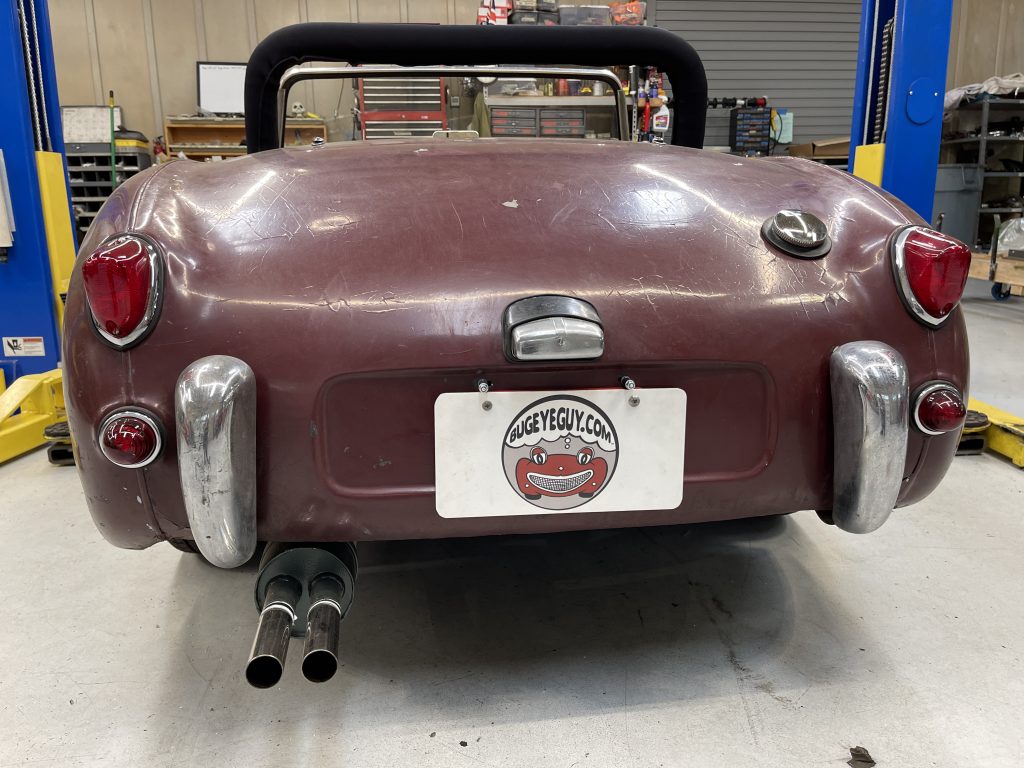
Gumby was only 20 years old at the time. And no one, (not even me) thought that one day we would be looking for a perfect glassy base/clear-coat finish on such a simple and basic machine, with variable fender beading and road rash from a hard life spent on military bases and race tracks. It was just a cool and simple little sports car. And underneath the many restored cars we have handled, you can sometimes look deep enough and feel that essence. But on this particular car, that wonderful DNA is hard to miss.
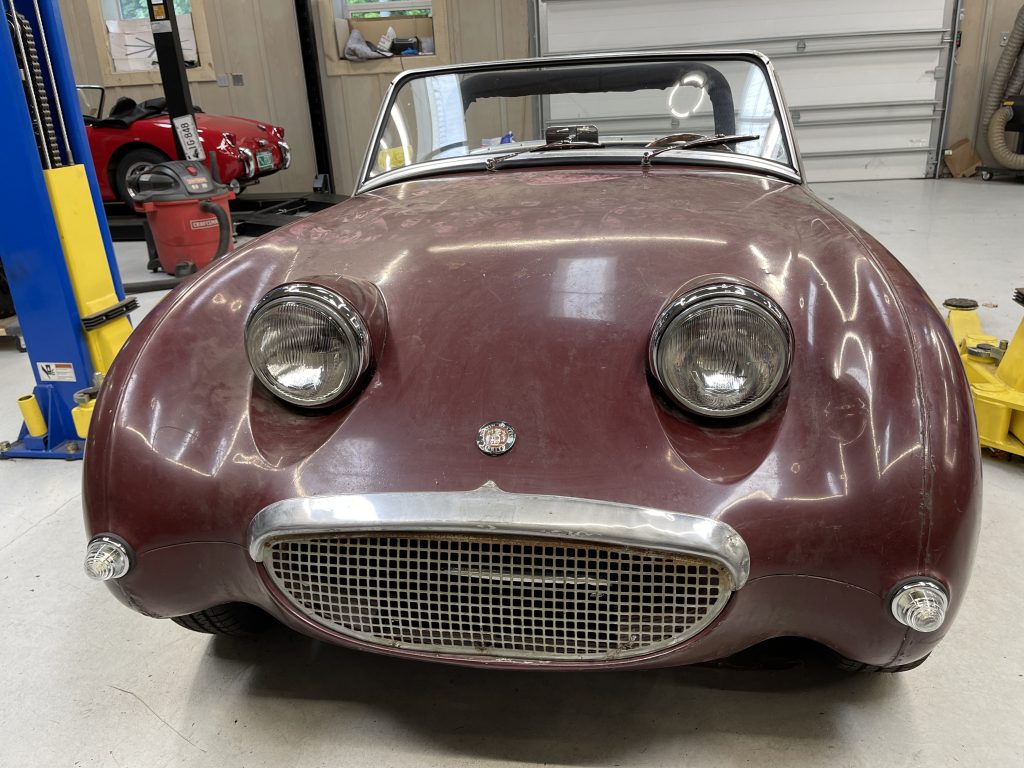
This is a Bugeye pure and simple. It looks and feels the part. We have built a “plush” interior to satisfy the modern SUV-driving comfort-seeking baby boomer. We have fixed the rattles and ironed-out the kinks it might have carried since the Vietnam war. We have insulated and isolated, removed the gremlins and made it as reliable as possible. We installed a rebuilt 1275 engine with new carburetors and a muffler that screams “tough guy on the block,” and viola, you have a Bugeye that brings you back to this other time, when we cared about other things. And had more time. And drove a car without simultaneously looking at a screen. Don’t get me wrong, I used my (BUG)iPhone47 to help sell almost 315 Bugeyes. But sometimes you just need a little patina to take you back.
This is Jim’s and Nancy’s Bugeye, it is not for sale. It is a genuine Bugeyeguy build and we are forever grateful for the opportunity to rebuild it. This car lives in Southern Mass, and perhaps you will find it soon at a New England car show near you.
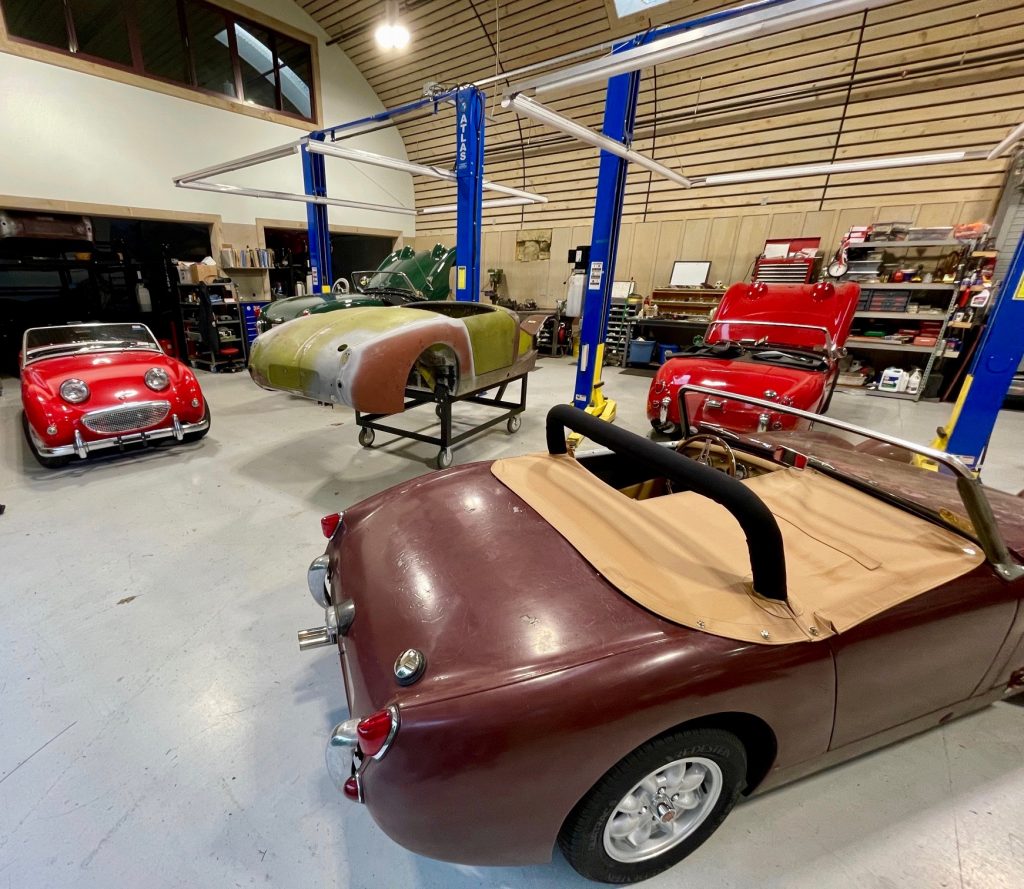
I once brought a Bugeye to a concours to join a group of frantically wiping owners seeking to eradicate any dust accumulated on the morning drive into the park before the judging began. Then came the announcement, “Gentlemen, five minutes until rags down.”
I wish there was a “patina” class at major car shows for cars like this, where the proud owners could show-off their paint chips and patina. In my fantasy car show, owners would lounge on their cars, and butt prints and swinging handbags would be welcome. Come, sit on our fenders, touch all you want. Everyone in this car show looks really relaxed, and Hagerty even has a graph that shows that life expectancy of these participants is higher than all other subsets.
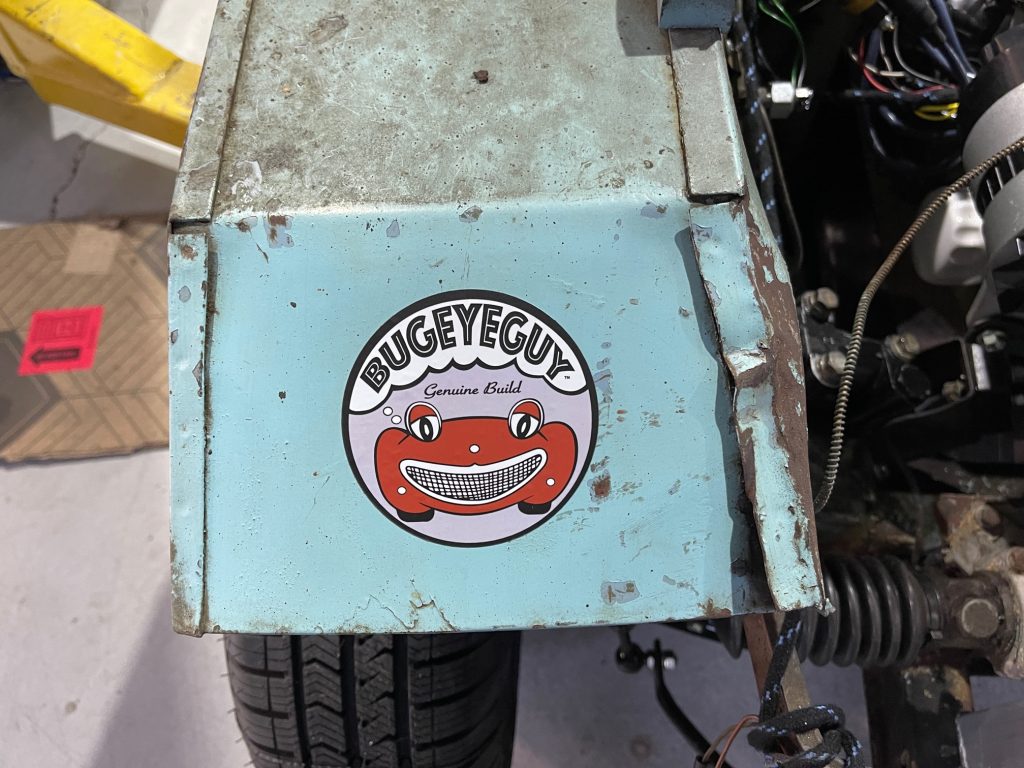
If you want to give your patina-ladened Bugeye a second life (like Jim and Nancy did) please pick up your pushbutton phone and give us a call! We’ll pick it up, and help you find it’s essence once again, albeit in our modern world.
